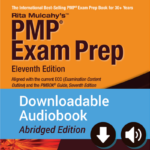This post is a follow-up to my Agile DNA webinar I hosted a little over a month ago. This was my first webinar for RMC and we had a great interest with over 2,000 people registering for the event interested in Agile approaches in agile projects. The recording is now available, see below for details on how to access it. The webinar was entitled “Agile DNA, the People and Process Elements of Successful Agile Projects” and the DNA theme came from the twin strands of People and Process guidance that run through all agile approaches in agile projects and make agile uniquely what it is.
In case you have not noticed it before, Agile approaches weave people elements and process elements together through the agile mindset, values and principles. For simplicity of understanding we pull these elements apart to talk about them individually, but in reality, they are inextricably linked and self supporting.
In the Webinar I explored how not only are these two elements present in all views of agile, no matter how you slice it, but also always in an equal balance between people and process. This is no spooky coincidence, or hidden code, rather the sign of a balanced system. Let’s look further:
The Agile Manifesto has two values focused on people and two focused on process:
When we examine the 12 Agile Manifesto Principles again we see 6 focused on people and a counter balancing 6 based on process.
1. Our highest priority is to satisfy the customer through early and continuous delivery of valuable software.
2. Welcome changing requirements, even late in development. Agile processes harness change for the customer’s competitive advantage.
3. Deliver working software frequently, from a couple of weeks to a couple of months, with a preference to the shorter timescale.
4. Business people and developers must work together daily throughout the project.
5. Builds projects around motivated individuals. Give them the environment and support they need, and trust them to get the job done.
6. The most efficient and effective method of conveying information to and within a development team is face-to-face conversation.
7. Working software is the primary measure of progress.
8. Agile processes promote sustainable development. Sponsors, developers, and users should be able to maintain a constant pace indefinitely.
9. Continuous attention to technical excellence and good design enhances agility.
10. Simplicity – the art of maximizing the amount of work not done – is essential.
11. The best architectures, requirements, and designs emerge from self-organizing teams.
12. At regular intervals, the team reflects on how to become more effective then tunes and adjusts its behavior accordingly.
Finally, we looked at frameworks including Alistair Cockburn’s Heart of Agile and Joshua Kerievsky’s Modern agile. First looking at the original model and then superimposing views of People and Process.
In Alistair’s Heart of Agile model the “Deliver” and “Improve” process concepts are complimented by the “Collaborate” and “Reflect” people focused concepts. Likewise, Joshua’s very much people focused “Make People Awesome” and “Make Safety a Prerequisite” are balanced and complimented by the “Deliver Value Continually” and “Experiment and Learn Rapidly” ideas.
Both models are evenly balanced between people and process advice and this fact along with their clarity and simplicity is what makes them both powerful and compelling.
The webinar was an introductory presentation designed for people new to agile, but experienced practitioners can also benefit from being aware of these two elements and looking for a healthy balance of attention within teams. People sometimes have a personal bias or natural aptitude for the people side of things or the process side of things. So why not ask the team if they think the system is in balance and what they suggest to restore any imbalances?
Find this webinar and more here. If you know anyone who would benefit from learning more about Agile approaches in agile projects, please feel free to share.
- Today’s Project Manager: 9 Tips For Effective Project Management in 2020 - April 28, 2020
- Agile Risk Management - June 10, 2019
- PMI-ACP® Credential – What you Need to Know for Certification - July 5, 2018






